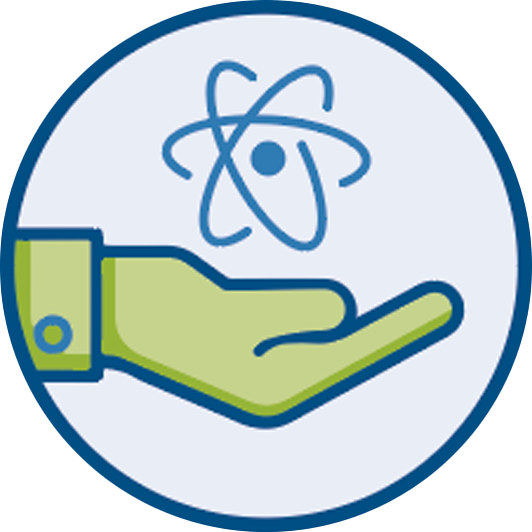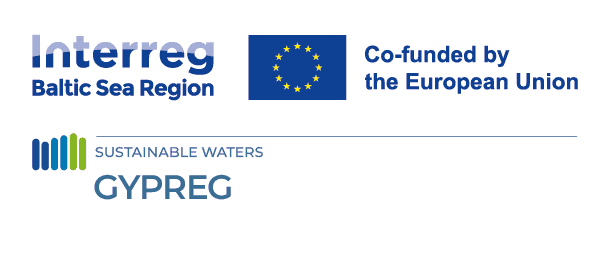
Gypsum in Action: Awareness-Raising Events in Latvia
13 October 2025
Hands-On Science at Researchers’ Night in Riga
On September 26, the Latvian Institute of Aquatic Ecology (LHEI) in Riga hosted an interactive experience during Researchers’ Night, drawing visitors of all ages into the world of aquatic ecosystems. At the heart of the GYPREG stand was a compelling soil experiment: two buckets—one with untreated soil and one mixed with gypsum powder—demonstrated how water clarity changes depending on treatment. The untreated soil released cloudy, yellowish water, while the gypsum-treated soil produced noticeably clearer results. This simple yet powerful demonstration helped visitors understand how gypsum binds phosphorus, a key mechanism in reducing nutrient runoff and improving water quality.
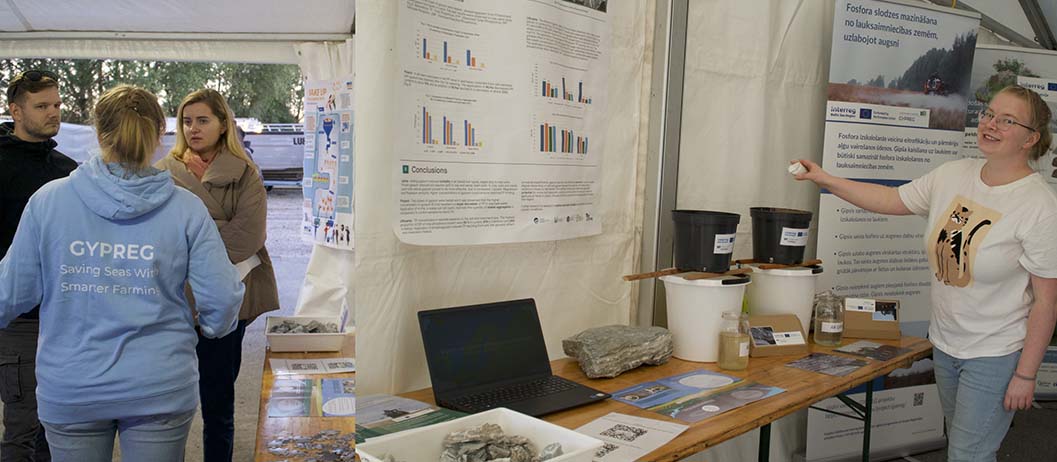
© LHEI
Sea Festival in Liepaja
Earlier in the summer, on July 12, LHEI participated in the annual Sea Festival in Liepaja on Latvia’s west coast. Amid celebrations of marine life and coastal culture, the institute introduced the GYPREG project through engaging discussions on sustainable agriculture and water protection. Visitors explored the role of gypsum in preserving aquatic ecosystems and played the educational game “Water Circus”, which highlighted the challenges of nutrient pollution in a fun and interactive way.
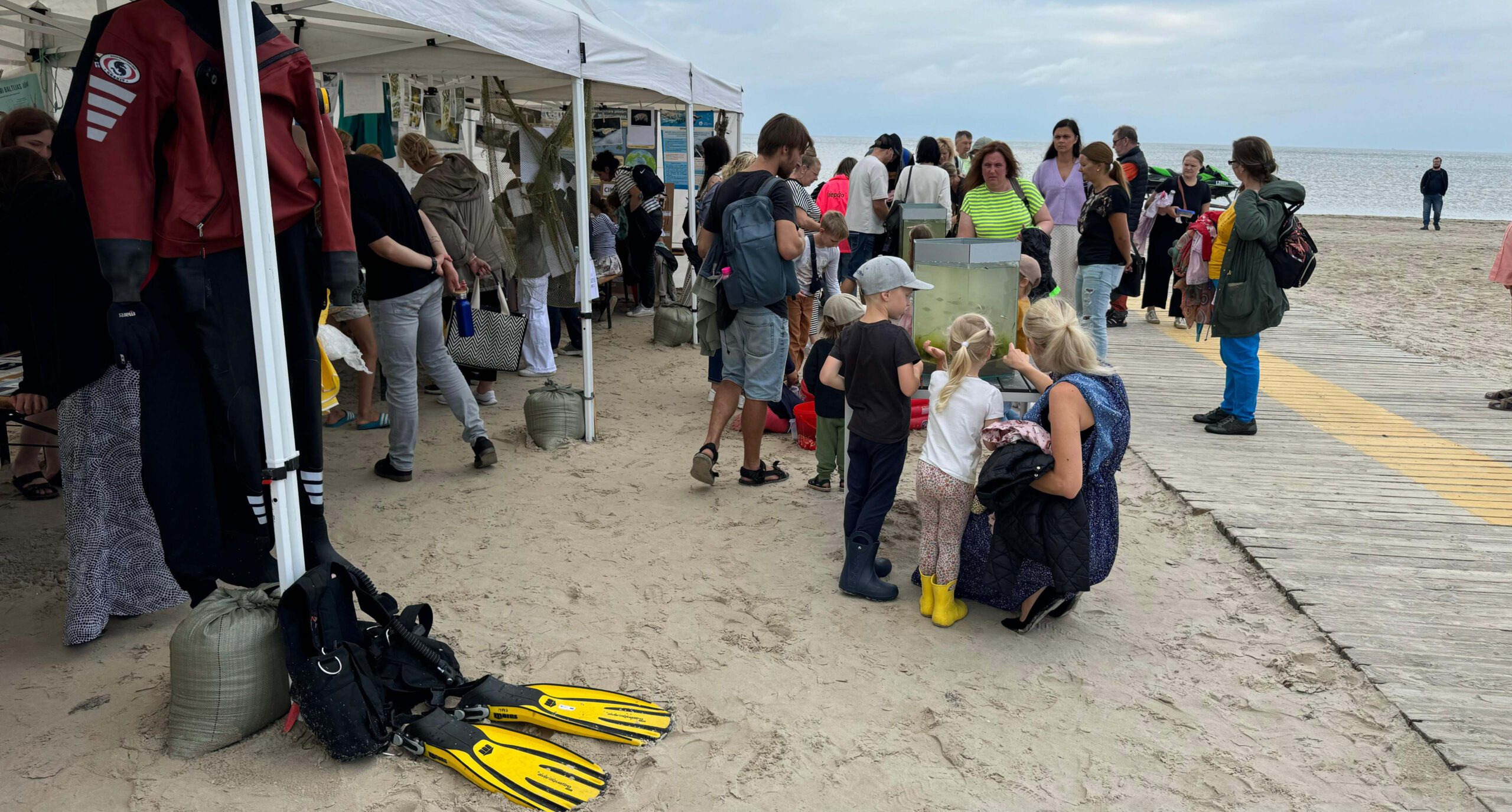
© LHEI
Youth Song and Dance Festival in Riga
On July 10, LHEI joined the Latvian School Youth Song and Dance Festival in Riga—one of the country’s largest cultural events. As part of the environmental sub-program “My Green Festival”, young participants attended nature workshops and learned about the GYPREG project. They discovered how gypsum, a natural mineral found in Latvia, can help combat eutrophication in lakes and rivers. Through microscope observations and tactile exploration, students gained a deeper understanding of gypsum’s environmental benefits.

© LHEI
Hands-On Events Engaging Diverse Audiences
The events in Latvia demonstrated how diverse audiences—from schoolchildren to festivalgoers and science enthusiasts—can be reached through hands-on activities and meaningful dialogue. By showcasing gypsum’s role in water protection across cultural, coastal, and scientific settings, the GYPREG project sparked curiosity and encouraged practical understanding of environmental solutions. The shared enthusiasm highlights the importance of continued collaboration in promoting sustainable practices throughout the region.
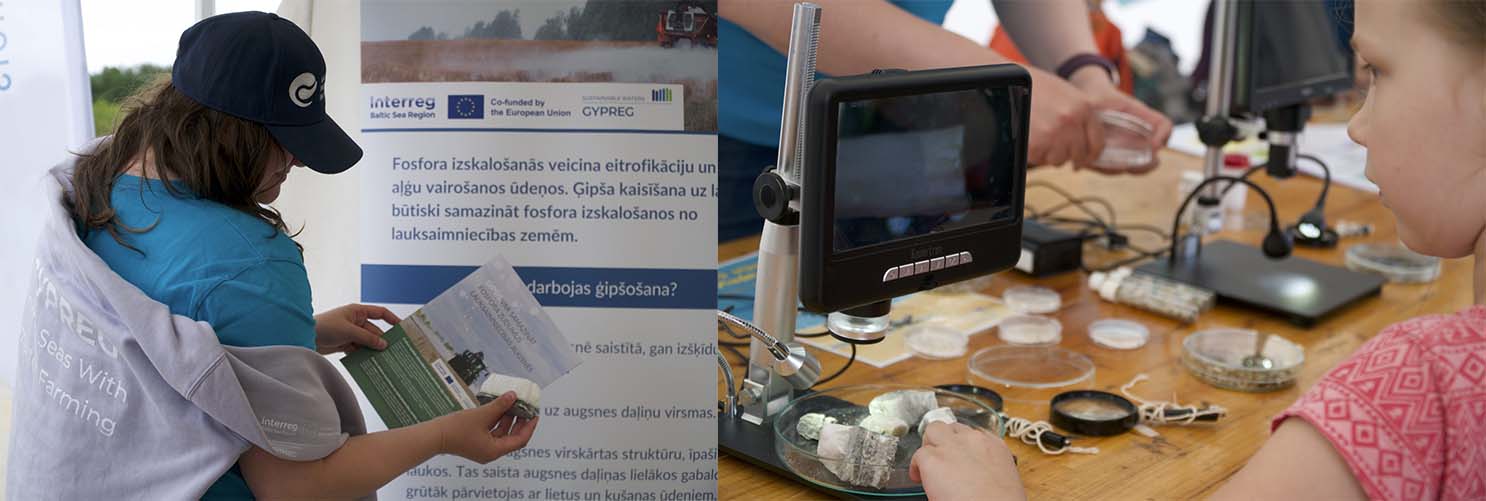
© LHEI
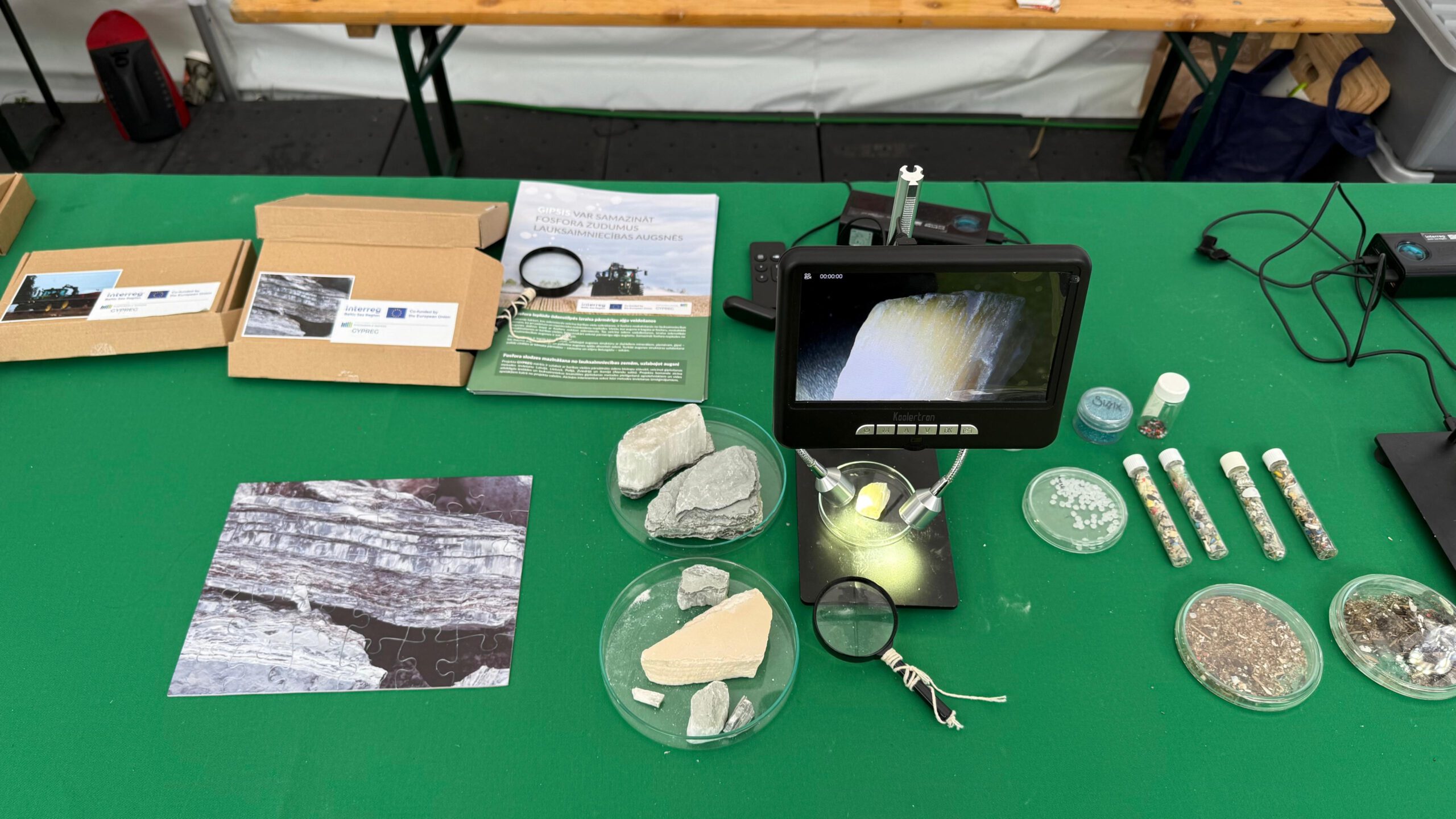
© LHEI



